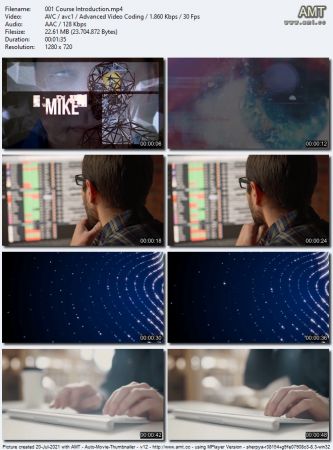Data Cleansing Master Class in Python
- 20.07.2021
- 128

MP4 | Video: h264, 1280x720 | Audio: AAC, 44.1 KHz, 2 Ch
Genre: eLearning | Language: English + srt | Duration: 104 lectures (3h 31m) | Size: 1.12 GB
The Complete Guide to Data Cleansing for Machine Learning Engineers
What you'll learn:
You'll learn data imputation and advanced data cleansing techniques.
You'll learn how to apply real-world data cleansing techniques to your data.
You'll learn advanced data cleansing techniques.
You'll learn how to prepare data in a way that avoids data leakage, and in turn, incorrect model evaluation.
Requirements
You'll need a really solid foundation in Python.
You'll need to understand the basics of machine learning.
Description
Welcome to Data Cleansing Master Class in Python.
Data preparation may be the most important part of a machine learning project. It is the most time consuming part, although it seems to be the least discussed topic. Data preparation, sometimes referred to as data preprocessing, is the act of transforming raw data into a form that is appropriate for modeling.
Machine learning algorithms require input data to be numbers, and most algorithm implementations maintain this expectation. Therefore, if your data contains data types and values that are not numbers, such as labels, you will need to change the data into numbers. Further, specific machine learning algorithms have expectations regarding the data types, scale, probability distribution, and relationships between input variables, and you may need to change the data to meet these expectations.
In the course you'll learn:
The importance of data preparation for predictive modeling machine learning projects.
How to prepare data in a way that avoids data leakage, and in turn, incorrect model evaluation.
How to identify and handle problems with messy data, such as outliers and missing values.
How to identify and remove irrelevant and redundant input variables with feature selection methods.
How to know which feature selection method to choose based on the data types of the variables.
How to scale the range of input variables using normalization and standardization techniques.
How to encode categorical variables as numbers and numeric variables as categories.
How to transform the probability distribution of input variables.
How to transform a dataset with different variable types and how to transform target variables.
How to project variables into a lower-dimensional space that captures the salient data relationships.
This course is a hands on-guide. It is a playbook and a workbook intended for you to learn by doing and then apply your new understanding to the feature engineering in Python. To get the most out of the course, I would recommend working through all the examples in each tutorial. If you watch this course like a movie you'll get little out of it.
In the applied space machine learning is programming and programming is a hands on-sport.
Thank you for your interest in Data Cleansing Master Class in Python.
Let's get started!
Who this course is for
You are serious about become a machine learning engineer in the real-world.

Download link:
rapidgator_net:
https://rapidgator.net/file/064f8e71679b4a02fcd78d672f887ddf/cafcj.Data.Cleansing.Master.Class.in.Python.part1.rar.html
https://rapidgator.net/file/7dc39de43b80c3c996859cfad28e4ebd/cafcj.Data.Cleansing.Master.Class.in.Python.part2.rar.html
uploadgig_com:
https://uploadgig.com/file/download/aeE787c92C7c9eC8/cafcj.Data.Cleansing.Master.Class.in.Python.part1.rar
https://uploadgig.com/file/download/51a0ee914b05cd60/cafcj.Data.Cleansing.Master.Class.in.Python.part2.rar
nitroflare_com:
https://nitro.download/view/9AC03860CFC98ED/cafcj.Data.Cleansing.Master.Class.in.Python.part1.rar
https://nitro.download/view/E0BF0B7418C1733/cafcj.Data.Cleansing.Master.Class.in.Python.part2.rar
https://rapidgator.net/file/064f8e71679b4a02fcd78d672f887ddf/cafcj.Data.Cleansing.Master.Class.in.Python.part1.rar.html
https://rapidgator.net/file/7dc39de43b80c3c996859cfad28e4ebd/cafcj.Data.Cleansing.Master.Class.in.Python.part2.rar.html
uploadgig_com:
https://uploadgig.com/file/download/aeE787c92C7c9eC8/cafcj.Data.Cleansing.Master.Class.in.Python.part1.rar
https://uploadgig.com/file/download/51a0ee914b05cd60/cafcj.Data.Cleansing.Master.Class.in.Python.part2.rar
nitroflare_com:
https://nitro.download/view/9AC03860CFC98ED/cafcj.Data.Cleansing.Master.Class.in.Python.part1.rar
https://nitro.download/view/E0BF0B7418C1733/cafcj.Data.Cleansing.Master.Class.in.Python.part2.rar
Links are Interchangeable - No Password - Single Extraction